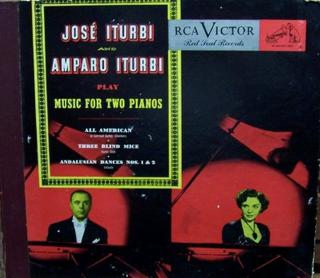A Roots-of-Raymond-Scott simulpost.
History is being made. Right now. On this very blog. My first simulpost.
The subject of this post--the roots of Raymond Scott--straddles both blogs. (That doesn't sound right....) Straddles the subjects of both. Something like that. The Scott-esque examples I have to offer are, simultaneously, Music You Possibly Won't Hear Anyplace Else material and Vintage Lounge material. So, why not simulpost them? ("Good idea, Lee.") Thanks.
Who said that??
Anyway, I thought "simulpost" was pretty clever when I thought of it, but the word is all over the Net, so I guess it didn't start with me. That would be the safest conclusion.
We start with an example of "symphonic jazz" from 1927, a clever work that belongs to the same light-concert/jazz-miniature school as Scott's stuff, only earlier. If you don't believe me, well... listen. This is Rube Bloom's Soliloquy, from 1927, performed by Paul Whiteman's Concert Orchestra:
Soliloquy (Rube Bloom), Paul Whiteman and His Concert Orchestra, 1927. From 12" Victor 78.
I'm almost sure that Ferde Grofe was the arranger, because 1) I remember reading it someplace and 2) it sure sounds like Grofe. But I can't prove it. Rube Bloom wrote pop songs like The Man from the South, Fools Rush In, and Good for Nothin' Joe, and was very highly regarded by Alec Wilder.
The brilliant, blind Welsh pianist and composer Alec Templeton used titles that were goofier and funnier than Scott's, and--judging by the following movements from his Insect Suite--wrote music not unlike Scott's. I find Templeton's music to be a more skillful blend of "serious" and popular, but that's just me. These are 1944 radio recordings by Paul Whiteman, but no telling when this stinging, biting suite was actually written.
Ode to a Bumble Bee's Bottom (Templeton), Paul Whiteman and His Orchestra, 1944.
June Bug Jive (Templeton), Paul Whiteman and His Orchestra, 1944.
The Flea Fugue (Templeton), Paul Whiteman and His Orchestra, 1944.
Again, it may just be me, but I find this material far more interesting and progressive-sounding for its time than Scott's movie-theatre-style agitatos.
Written in the early-Scott-era year of 1938, Parade of the Visiting Firemen is the closing movement of J. Clarence Chambers' "satirical suite" All American. More than a little like Erik Satie's four-hand piano works, this piece nevertheless was quite edgy for its day. According to the liner notes for Jose Iturbi and Amparo Iturbi Play Music for Two Pianos, the Iturbis recorded All American shortly after it was written. So, this may be that recording. Or it may be a later one, from 1948. If none of his is making any sense, I blame the sinus-med combo I'm taking at the moment (Sudafed and Claritin). We are, after all, in the middle of a major national Pass-the-Blame-athon.
Parade of the Visiting Firemen (A Satirical Suite for Two Pianos, J. Clarence Chambers, 1938). Jose and Amparo Itrubi, from 1948 12" 78 album on RCA Victor.

Detail overload. Must... take break. Must....
Lee
The subject of this post--the roots of Raymond Scott--straddles both blogs. (That doesn't sound right....) Straddles the subjects of both. Something like that. The Scott-esque examples I have to offer are, simultaneously, Music You Possibly Won't Hear Anyplace Else material and Vintage Lounge material. So, why not simulpost them? ("Good idea, Lee.") Thanks.
Who said that??
Anyway, I thought "simulpost" was pretty clever when I thought of it, but the word is all over the Net, so I guess it didn't start with me. That would be the safest conclusion.
We start with an example of "symphonic jazz" from 1927, a clever work that belongs to the same light-concert/jazz-miniature school as Scott's stuff, only earlier. If you don't believe me, well... listen. This is Rube Bloom's Soliloquy, from 1927, performed by Paul Whiteman's Concert Orchestra:
Soliloquy (Rube Bloom), Paul Whiteman and His Concert Orchestra, 1927. From 12" Victor 78.
I'm almost sure that Ferde Grofe was the arranger, because 1) I remember reading it someplace and 2) it sure sounds like Grofe. But I can't prove it. Rube Bloom wrote pop songs like The Man from the South, Fools Rush In, and Good for Nothin' Joe, and was very highly regarded by Alec Wilder.
The brilliant, blind Welsh pianist and composer Alec Templeton used titles that were goofier and funnier than Scott's, and--judging by the following movements from his Insect Suite--wrote music not unlike Scott's. I find Templeton's music to be a more skillful blend of "serious" and popular, but that's just me. These are 1944 radio recordings by Paul Whiteman, but no telling when this stinging, biting suite was actually written.
Ode to a Bumble Bee's Bottom (Templeton), Paul Whiteman and His Orchestra, 1944.
June Bug Jive (Templeton), Paul Whiteman and His Orchestra, 1944.
The Flea Fugue (Templeton), Paul Whiteman and His Orchestra, 1944.
Again, it may just be me, but I find this material far more interesting and progressive-sounding for its time than Scott's movie-theatre-style agitatos.
Written in the early-Scott-era year of 1938, Parade of the Visiting Firemen is the closing movement of J. Clarence Chambers' "satirical suite" All American. More than a little like Erik Satie's four-hand piano works, this piece nevertheless was quite edgy for its day. According to the liner notes for Jose Iturbi and Amparo Iturbi Play Music for Two Pianos, the Iturbis recorded All American shortly after it was written. So, this may be that recording. Or it may be a later one, from 1948. If none of his is making any sense, I blame the sinus-med combo I'm taking at the moment (Sudafed and Claritin). We are, after all, in the middle of a major national Pass-the-Blame-athon.
Parade of the Visiting Firemen (A Satirical Suite for Two Pianos, J. Clarence Chambers, 1938). Jose and Amparo Itrubi, from 1948 12" 78 album on RCA Victor.

Detail overload. Must... take break. Must....
Lee


0 Comments:
Post a Comment
<< Home